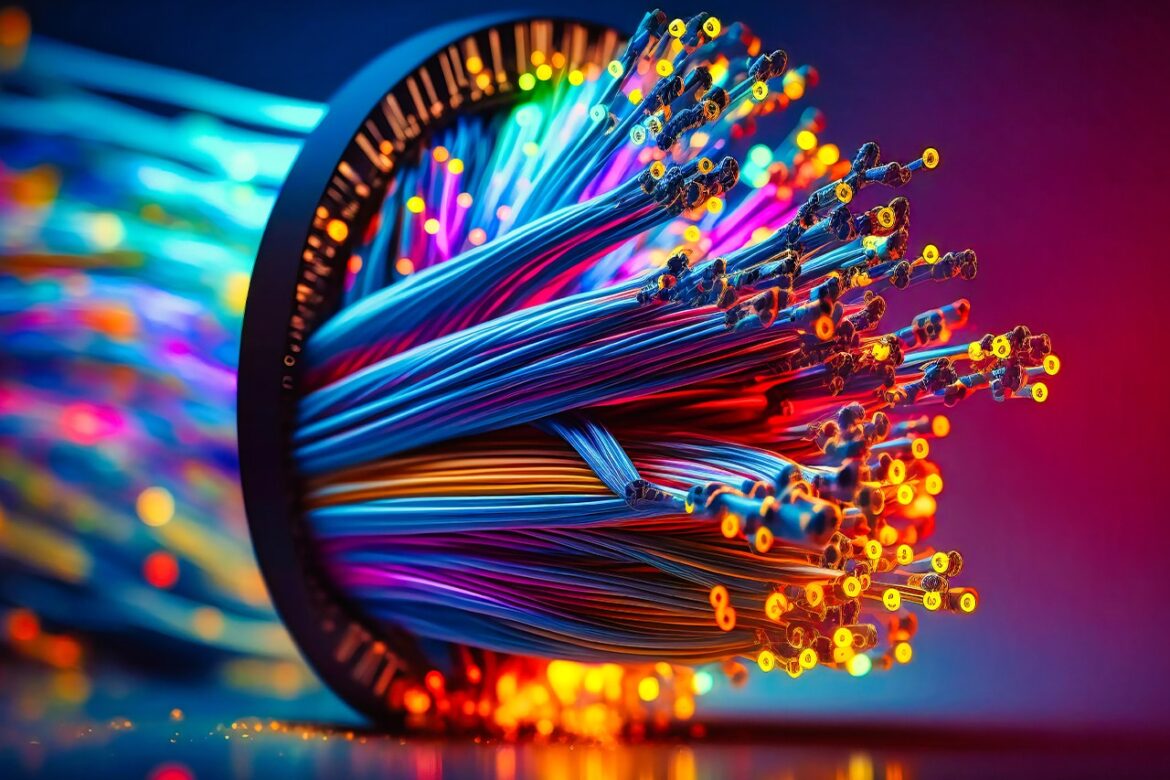796
If you want to connect fiber optics in your home, it is worth knowing the advantages and disadvantages in detail.
Advantages and disadvantages of fiber optics: These are the advantages
Fiber optics is not considered the “Internet of the future” for nothing. The technology impresses with its enormous speeds, high reliability, and strong environmental credentials.
- High transmission rates: Modern fiber optic connections currently enable download speeds of up to 1,000 Mbit/s and upload speeds of 200 Mbit/s – with high stability, even when several people in your household are streaming, working, or gaming at the same time. In comparison, VDSL connections usually reach a maximum of 250 Mbit/s, cable connections around 500 Mbit/s – and performance often fluctuates depending on usage.
- Future-proof: Fiber optics are virtually unlimited in terms of scalability. This means that you will be able to use future applications such as smart homes, autonomous driving, and the Internet of Things (IoT) without any problems—and without the need for new lines.
- Reliability and stability: Fiber optics are insensitive to electromagnetic interference, moisture, and temperature fluctuations. This ensures consistent performance, even when multiple devices are used simultaneously in the home.
- Energy efficiency & environmental friendliness: Fiber optic cables consume around five times less energy than conventional DSL or cable connections, not only during production but also in daily operation. This conserves resources and reduces CO₂ emissions in the long term. Fiber optics are therefore actively contributing to the energy transition.
- Increased property value: A fiber optic connection increases the market value of your property. More and more buyers are looking for fast, stable internet connections.
- Greater participation in rural areas: In less well-developed areas in particular, fiber optics ensure that home offices, homeschooling, and telemedicine are also possible—reliably and with full bandwidth.
Disadvantages of fiber optics
Despite its many advantages, there are also a few points to consider when switching to fiber optics. These mainly concern expansion and cost-effectiveness.
- Complex expansion: Laying fiber optic cables involves a great deal of construction work. The cables must be laid to every building and connected there, usually by hand.
- Cost factor: Tariffs for fiber optic internet are generally higher than for VDSL or cable. For users with low requirements, the price difference is therefore hardly worth it.
- Late decisions can be more expensive: If you decide to get a connection at a later date, you will often pay significantly higher connection fees than those who participate early on in an expansion project.
- Possible damage to buildings: In individual cases, damage to paths or walls may occur during installation—this is usually covered by the provider, but should be clarified in advance.

